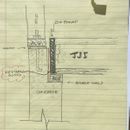Protecting Rim Board from Wet Concrete
Hello, what is the best way to protect Rim Board from wet concrete. This is for new build, concrete was recently poured. Is Ice & Water shield self adhesive membrane sufficient? Or shall we use rigid foam? I’m attaching the proposed solution for criticism/suggestions. Climate Zone 4. Thank you.
GBA Detail Library
A collection of one thousand construction details organized by climate and house part










Replies
B30B30,
Yes, a self-adhered membrane is what you want. You can apply the membrane to the back of the rim-board. If there is no sill-seal under the ACQ sill-plate you should also run a piece of membrane over it to stop moisture migrating upwards.
Deleted
Thank you! Just to clarify, would you run it under or over the ACQ?
B30B30,
It doesn't make much difference. The ACQ sill is already protected. The membrane is there to stop moisture making it's way up to the rim-board and bottom flange of the I-joists.
Thank you again!
You would do well putting them membrane in as a capillary break even with a pressure treated sill. The less that sill gets wet, the longer it will last, even though it's treated. Treated wood lasts longer, but not forever, so a little extra insurance with a capillary break is a good thing, and it's FAR easier to put it in now than to try to add it in later.
Bill
One option could be to simplify the design and use a wider sill plate and hang the I-joists off top-flange joist hangers. This saves a rim board plus forming the ledge in the foundation. The joist hangers add a bit of extra cost, extra labor is not too bad as these use only a few nails each.